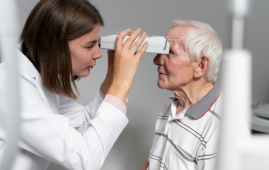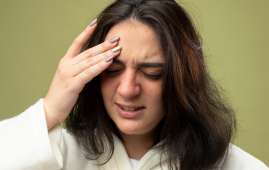

The World Health Organization (WHO) has issued its first-ever guidelines on managing chronic low back pain (LBP) in primary and community care settings, outlining which therapies to utilize and which to avoid during regular care.
Globally, low back pain is the main cause of disability. In 2020, nearly 1 in every 13 individuals, or 619 million people, had LBP, a 60% rise from 1990. Cases of LBP are likely to increase to 843 million by 2050, with the biggest growth forecast in Africa and Asia, where populations are growing and people are living longer lives.
The personal and communal consequences and costs of LBP are most severe for persons who have persistent symptoms. Chronic primary LBP, defined as pain that lasts for more than three months and is not caused by an underlying disease or other condition, accounts for the great majority of chronic LBP presentations in primary care, with at least 90% of cases being estimated. WHO is issuing guidelines on chronic primary LBP for these reasons.
“To achieve universal health coverage, the issue of low back pain cannot be ignored, as it is the leading cause of disability globally,” said Dr Bruce Aylward, WHO Assistant Director-General, Universal Health Coverage, Life Course. “Countries can address this ubiquitous but often-overlooked challenge by incorporating key, achievable interventions, as they strengthen their approaches to primary health care.”
WHO’s guidelines offer non-surgical therapies to help persons suffering from chronic primary LBP. Among these interventions are:
Education programs that promote awareness and self-care methods; exercise programs; some physical therapies, such as spinal manipulative therapy and massage; psychological therapies, such as cognitive behavioral therapy; and medications, such as nonsteroidal anti-inflammatory drugs.
The guidelines define fundamental principles of care for people with chronic primary LBP, proposing holistic, person-centered, equitable, non-stigmatizing, non-discriminatory, integrated, and coordinated care. Care should be personalized to meet the variety of factors (physical, psychological, and social) that may influence their experience with chronic primary LBP. Instead of single interventions performed in isolation, a suite of interventions may be required to address a person’s chronic primary LBP comprehensively.
In addition, the guidelines list 14 therapies that are not recommended for most persons in most situations. These therapies should not be used on a regular basis, according to WHO, because the possible dangers exceed the benefits. The World Health Organization warns against interventions such as:
lumbar braces, belts, and/or supports; some physical therapies, such as traction (i.e. pushing on a section of the body); and some medications, such as opioid pain relievers, which can lead to overdose and addiction.
LBP is a common condition that most people may suffer at some point in their lives. LBP accounted for 8.1% of all-cause years lived with disability globally in 2020. Nonetheless, clinical management guidelines have primarily been created in high-income nations. People who suffer from chronic pain often find it difficult to participate in family, social, and job activities, which can have a detrimental impact on their mental health and impose significant expenses on families, communities, and healthcare systems.
“Addressing chronic low back pain requires an integrated, person-centered approach. This means considering each person’s unique situation and the factors that might influence their pain experience,” said Dr Anshu Banerjee, WHO Director for Maternal, Newborn, Child, Adolescent Health and Ageing. “We are using this guideline as a tool to support a holistic approach to chronic low back pain care and to improve the quality, safety, and availability of care.”
LBP reduces life quality and is linked to comorbidities and increased mortality risk. Individuals suffering from chronic LBP, particularly the elderly, are more likely to fall into poverty, leave the labor force early, and acquire less wealth for retirement. On the other hand, older persons are more prone to adverse effects as a result of interventions, emphasizing the significance of adapting care to each individual’s needs. Addressing chronic LBP in older populations can promote healthy aging, allowing older people to preserve their well-being.
Source: WHO Guidelines – Chronic Low Back Pain Management
more recommended stories
 Brain Age Estimation: EEG Advancements in Neurology
Brain Age Estimation: EEG Advancements in NeurologyTo estimate brain age using EEG.
 Neurodegeneration Linked to Fibrin in Brain Injury
Neurodegeneration Linked to Fibrin in Brain InjuryThe health results for the approximately.
 DELiVR: Advancing Brain Cell Mapping with AI and VR
DELiVR: Advancing Brain Cell Mapping with AI and VRDELiVR is a novel AI-based method.
 Retinal Neurodegeneration in Parkinson’s Disease
Retinal Neurodegeneration in Parkinson’s DiseaseBy measuring the thickness of the.
 Epilepsy Seizures: Role of Astrocytes in Neural Hyperactivity
Epilepsy Seizures: Role of Astrocytes in Neural HyperactivityRoughly 1% of people experience epilepsy.
 Epilepsy Surgery: Rare Hemorrhagic Complications Study
Epilepsy Surgery: Rare Hemorrhagic Complications StudyFollowing cranial Epilepsy Surgery, hemorrhagic complications.
 Brain Connectivity Unveils New Insights into Autism
Brain Connectivity Unveils New Insights into AutismBecause autism spectrum disease symptoms can.
 Nutrient Optimization: Vitamin D for Health
Nutrient Optimization: Vitamin D for HealthResearchers addressed the prevalence of vitamin.
 AD and Headache Disorders: Recent Findings
AD and Headache Disorders: Recent FindingsAtopic dermatitis (AD) patients may be.
 Myasthenia Gravis Treatment: Eculizumab & Ravulizumab
Myasthenia Gravis Treatment: Eculizumab & RavulizumabA recent study found that myasthenia.

Leave a Comment